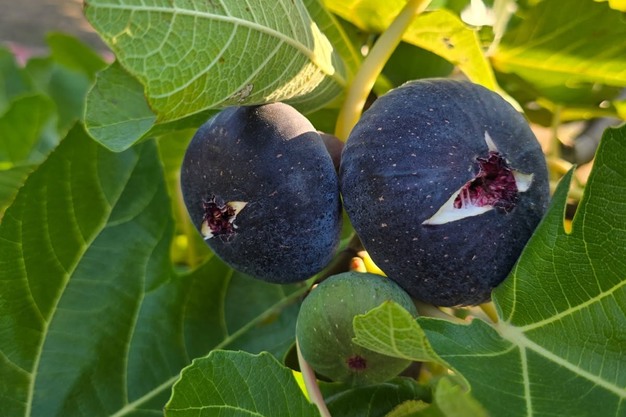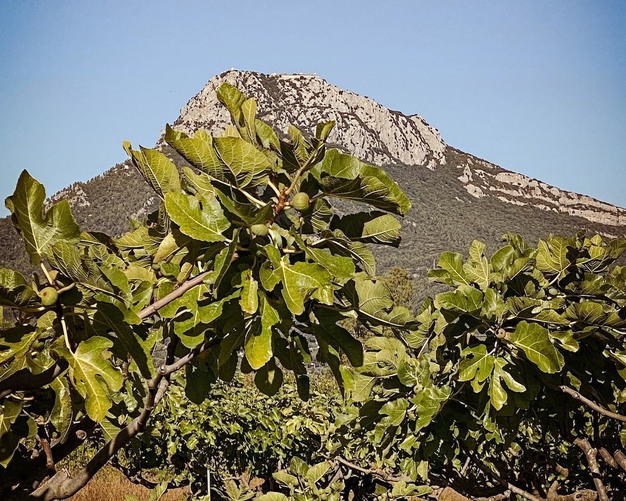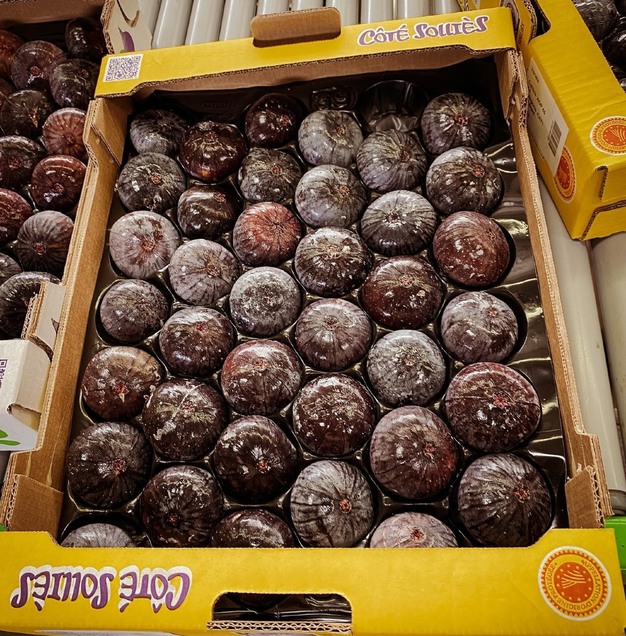"The 2025 harvest has got off to a flying start," says Cyril Kointz, Technical and Project Manager for the Syndicat d'Appellation and Quality Manager of the Copsolfruit cooperative, a producer organisation with 70 members. This year's fig season started earlier than usual and promises to be excellent both in volume and quality. "The harvest usually runs from 15 August to 15 November, with peak production between 1 September and 30 October. But this year, the season began much earlier, so we are already in full swing, with fruit on supermarket shelves. From day one, we've been delivering top-quality figs in very large quantities."
 © Syndicat AOP Figue de Solliès
© Syndicat AOP Figue de Solliès
A harvest of 1,000 tonnes expected this year
In 2025, the cooperative expects to harvest around 1,000 tonnes of figs, of which 500 to 600 tonnes will be marketed under the Figs de Solliès PDO. The PDO was officially recognised in 2006, then extended to fresh figs in 2011 and to processing figs in 2021. "These quality labels have been a real boost for the sector. The Figue de Solliès—also known as the Violette de Solliès or Bourjassotte noire—is a variety unique to our region, renowned for its exceptional taste. It stands out from other varieties thanks to its larger size, ranging from 4 to 7 cm. To put this in perspective, its minimum size is equivalent to the maximum size of many other varieties. This consistency is the result of both the terroir and the expertise of local growers. It is also an ultra-fresh product: harvested and packed on day one, and already on the shelves by day two. This very short time between harvest and sale ensures maximum freshness. From a sensory perspective, it offers the perfect balance between tangy and sweet. Eaten whole, the skin provides a slight tartness, while the flesh, bursting with natural sugars, reflects a fruit that has ripened on the tree and absorbed the full warmth of the summer sun. This highly sought-after flavour is simply unmatched."
 © Syndicat AOP Figue de Solliès
© Syndicat AOP Figue de Solliès
Figue de Solliès: A fruit growing in popularity
These unique qualities have earned the Solliès fig a special place in the French market, where demand consistently exceeds supply. "In France, annual fig consumption is around 10,000 to 12,000 tonnes. With 1,500 tonnes produced each year—1,000 tonnes by cooperative members and 500 by independent growers—the Solliès basin alone accounts for two-thirds to three-quarters of national production, which totals 2,000 to 2,500 tonnes. By comparison, Turkey produces between 150,000 and 200,000 tonnes annually. Yet the Solliès fig faces little direct competition, as it is positioned as a premium product, even though Turkish figs dominate the French market. Over the past few years, the Solliès fig has grown steadily in popularity, becoming one of the most emblematic crops of our terroir. It also generates strong returns for growers, thanks to the expertise and meticulous work that go into harvesting and packaging."
 © Syndicat AOP Figue de Solliès
© Syndicat AOP Figue de Solliès
Strict specifications and rigorous quality control
A premium product such as the Figue de Solliès is subject to the strictest standards of quality control. "Of the 1,000 tonnes harvested by Copsolfruit growers, about 600 tonnes will go to the fresh market, mainly supermarkets but also wholesalers such as Agruban, one of our key partners at Rungis MIN. The remaining 400 tonnes will be used for processing. The PDO's quality requirements are enforced with the utmost rigor. Figs are picked only at full ripeness, with a minimum sugar content of 14° Brix. Currently, figs for fresh consumption measure between 16 and 18° Brix, while those for processing exceed 20° Brix. We are fortunate to harvest autumn figs that have ripened naturally on the tree throughout the summer. Daily analyses and sensory tests every ten days ensure consistently high quality. If weather conditions compromise the fruit, the PDO label can even be temporarily suspended until quality improves. Producers must also comply with strict specifications that guarantee not only exceptional quality, but also environmentally responsible practices."
 © Syndicat AOP Figue de Solliès
© Syndicat AOP Figue de Solliès
For more information:
Sales team
Copsolfruit
Tel: +33 (0) 4.94.28.94.37
